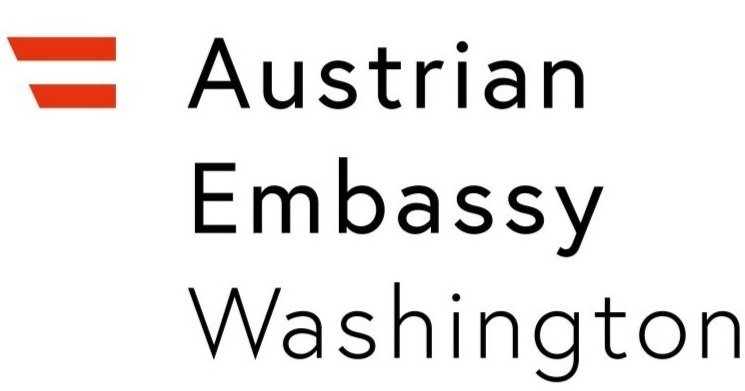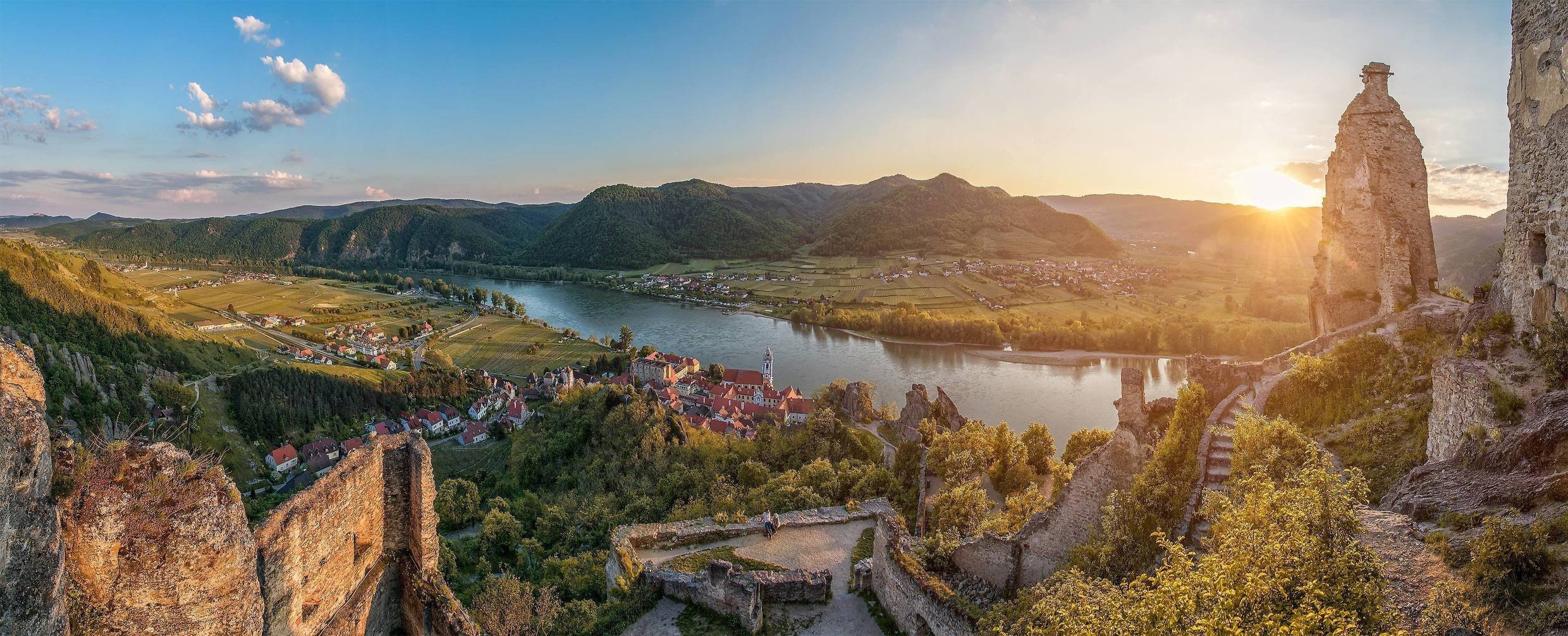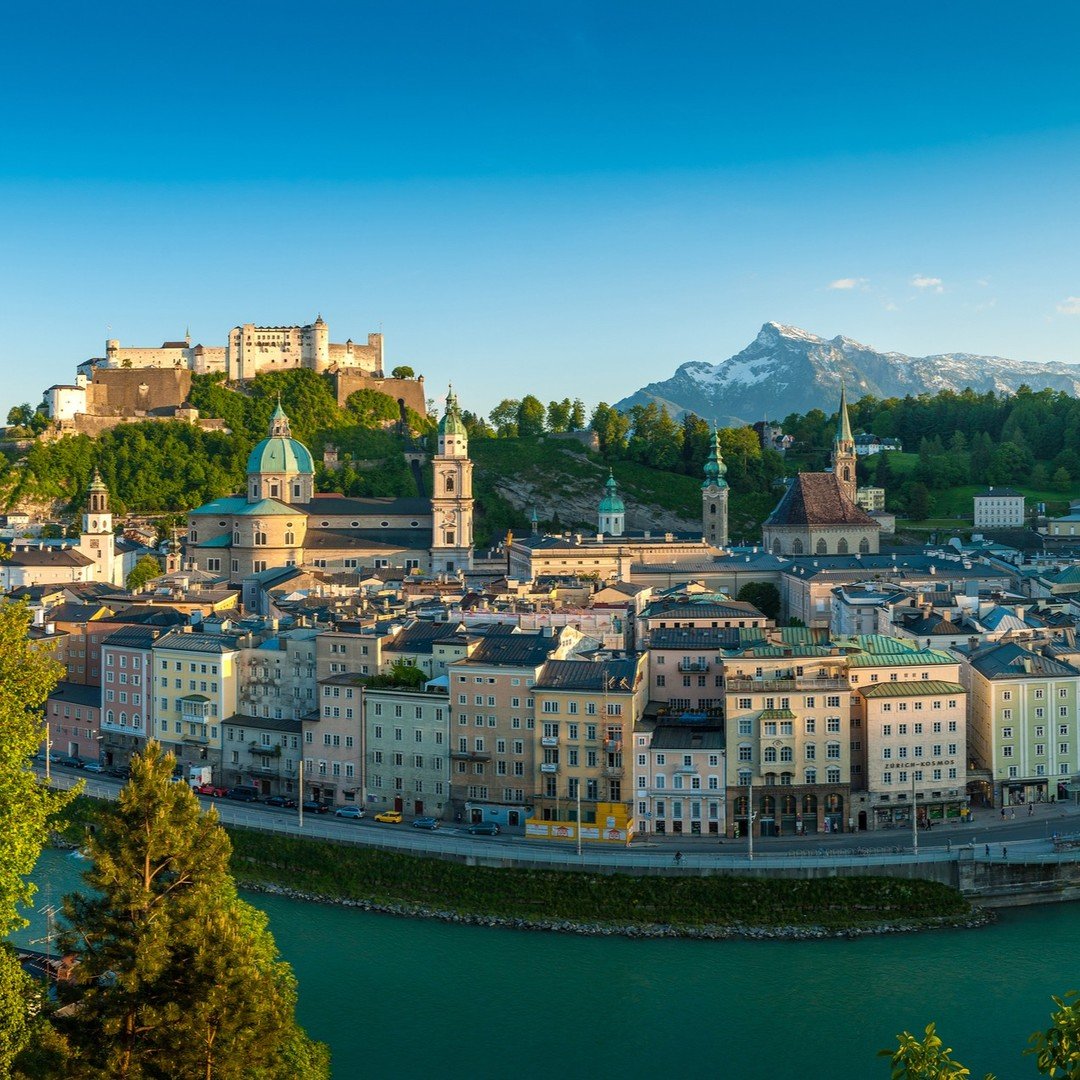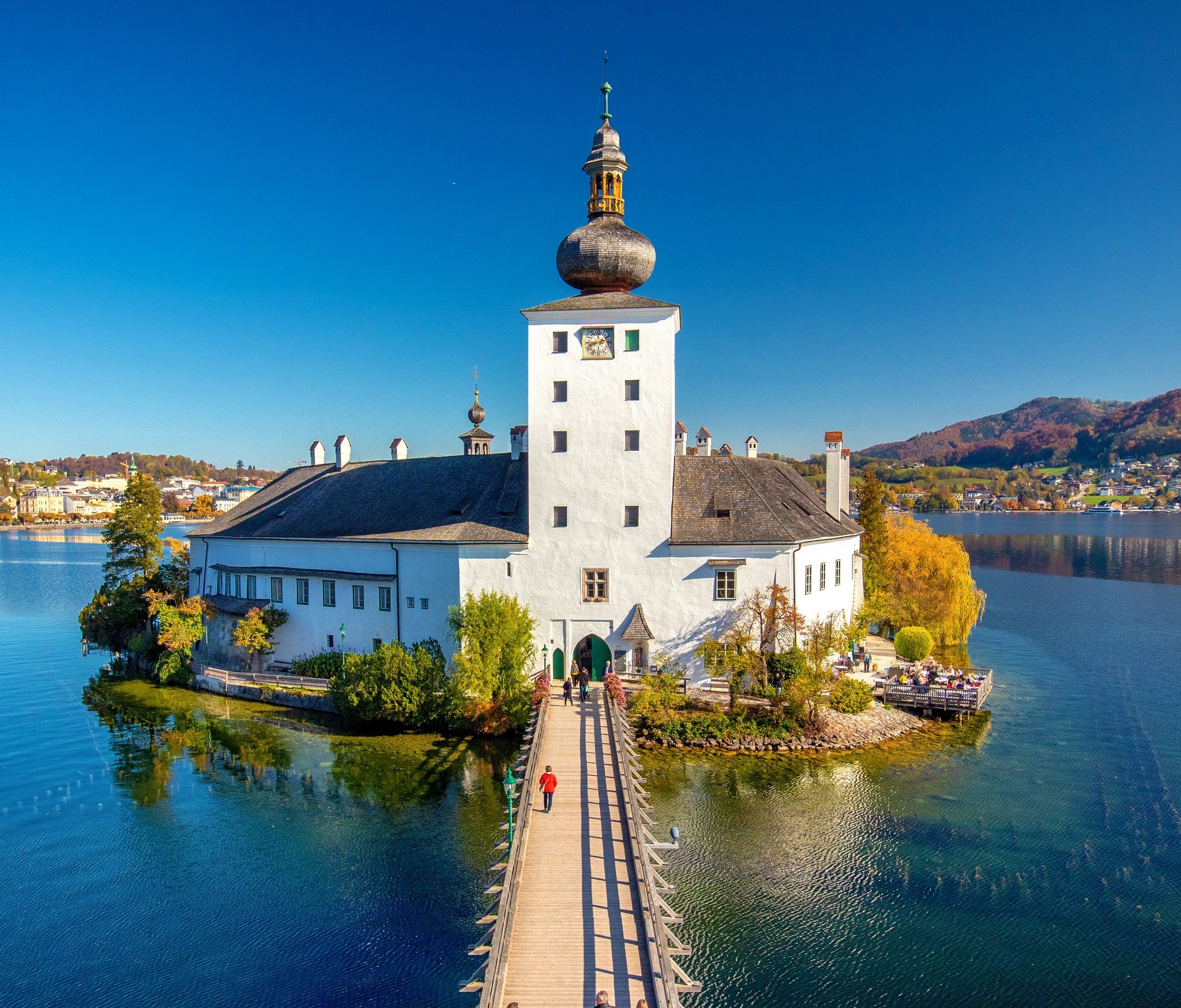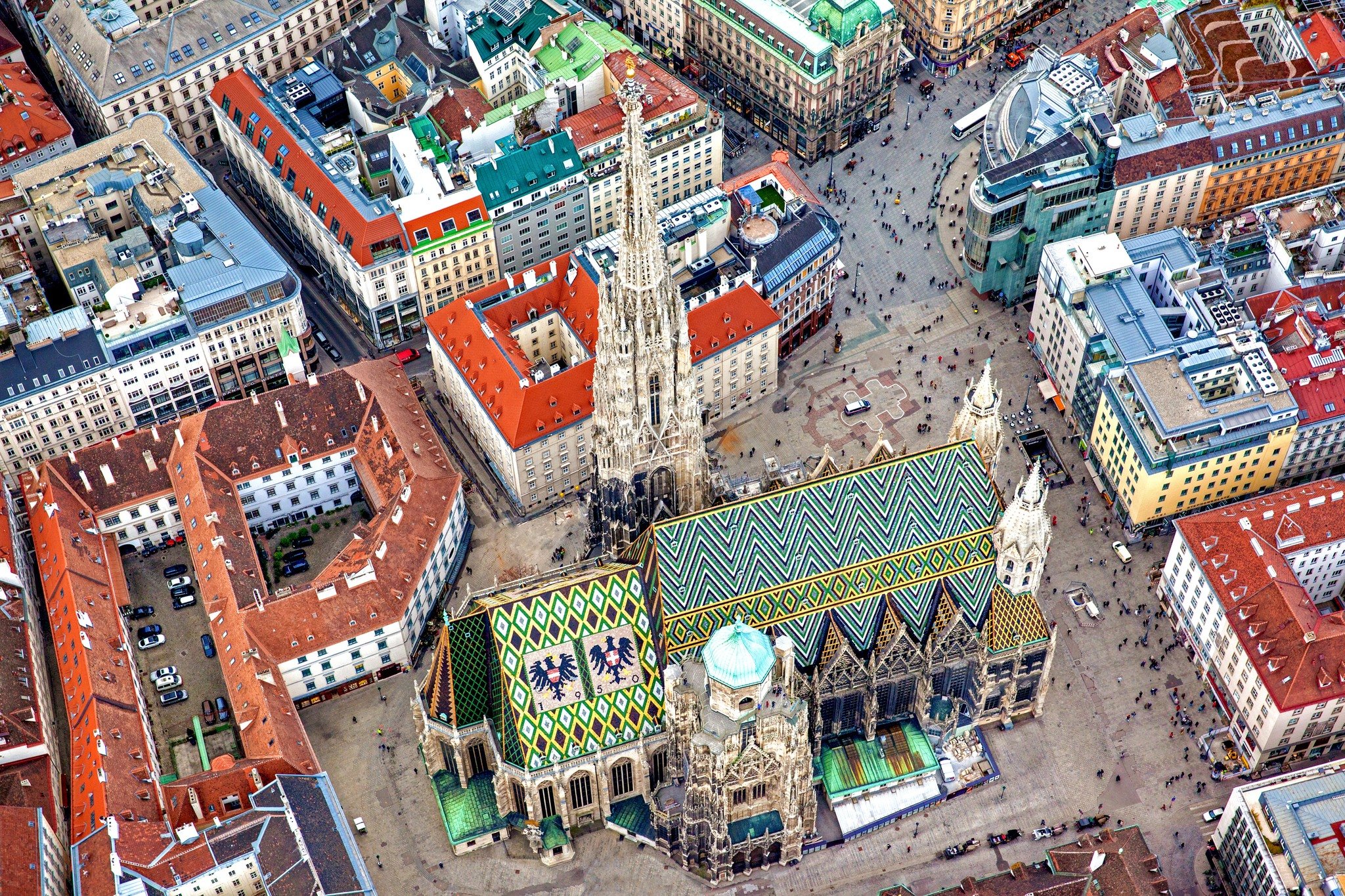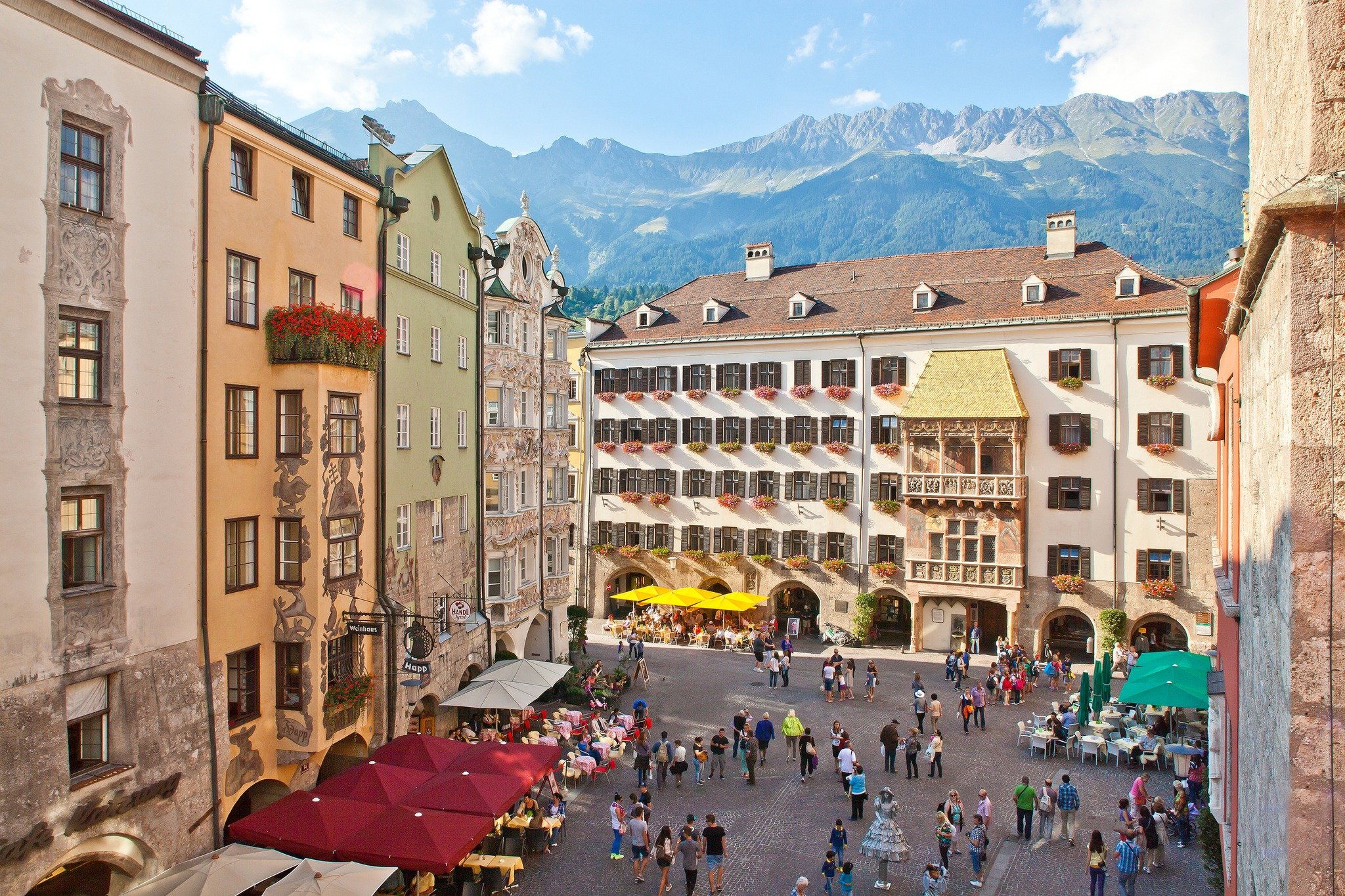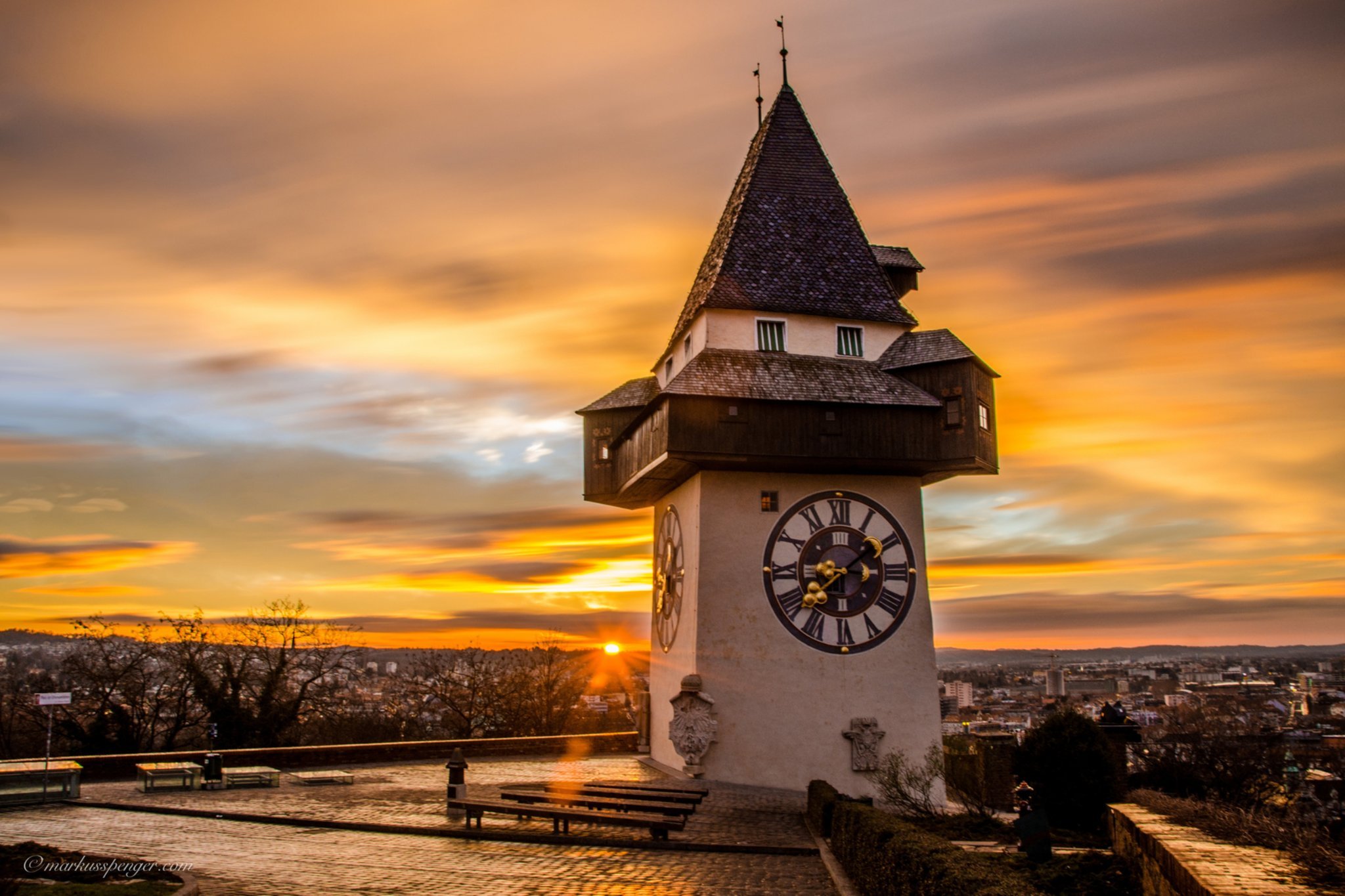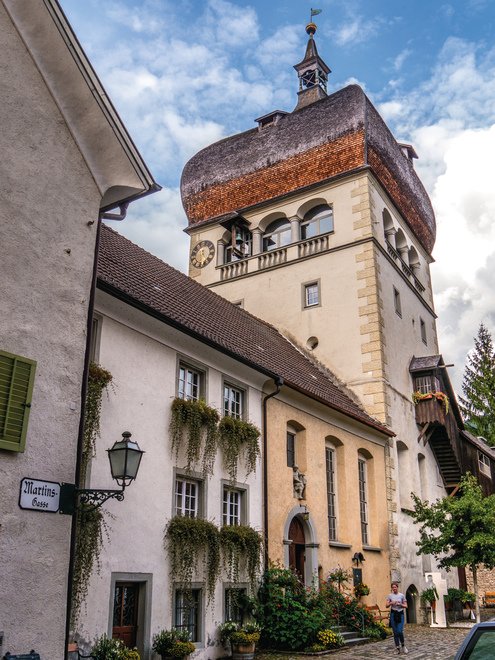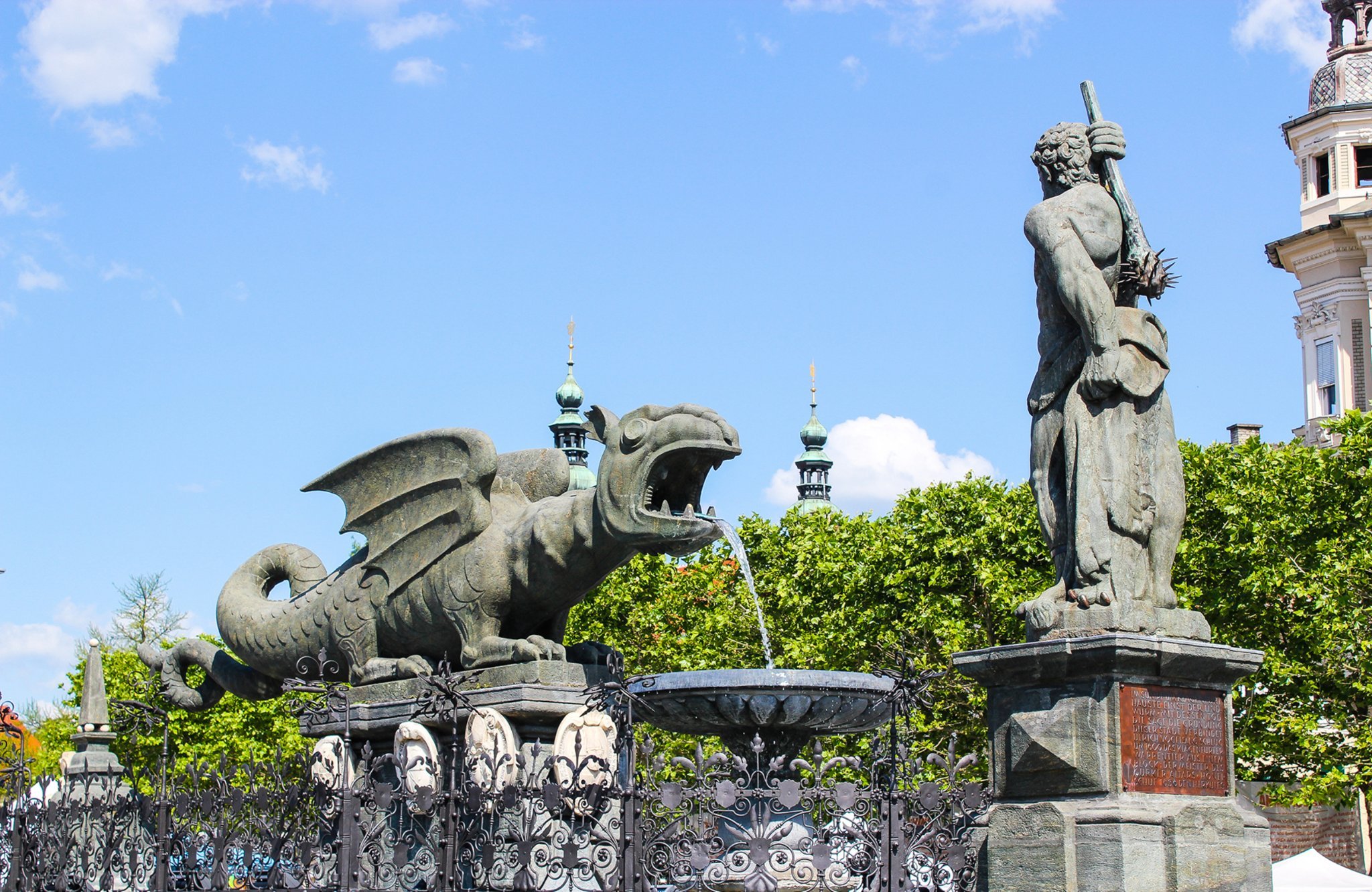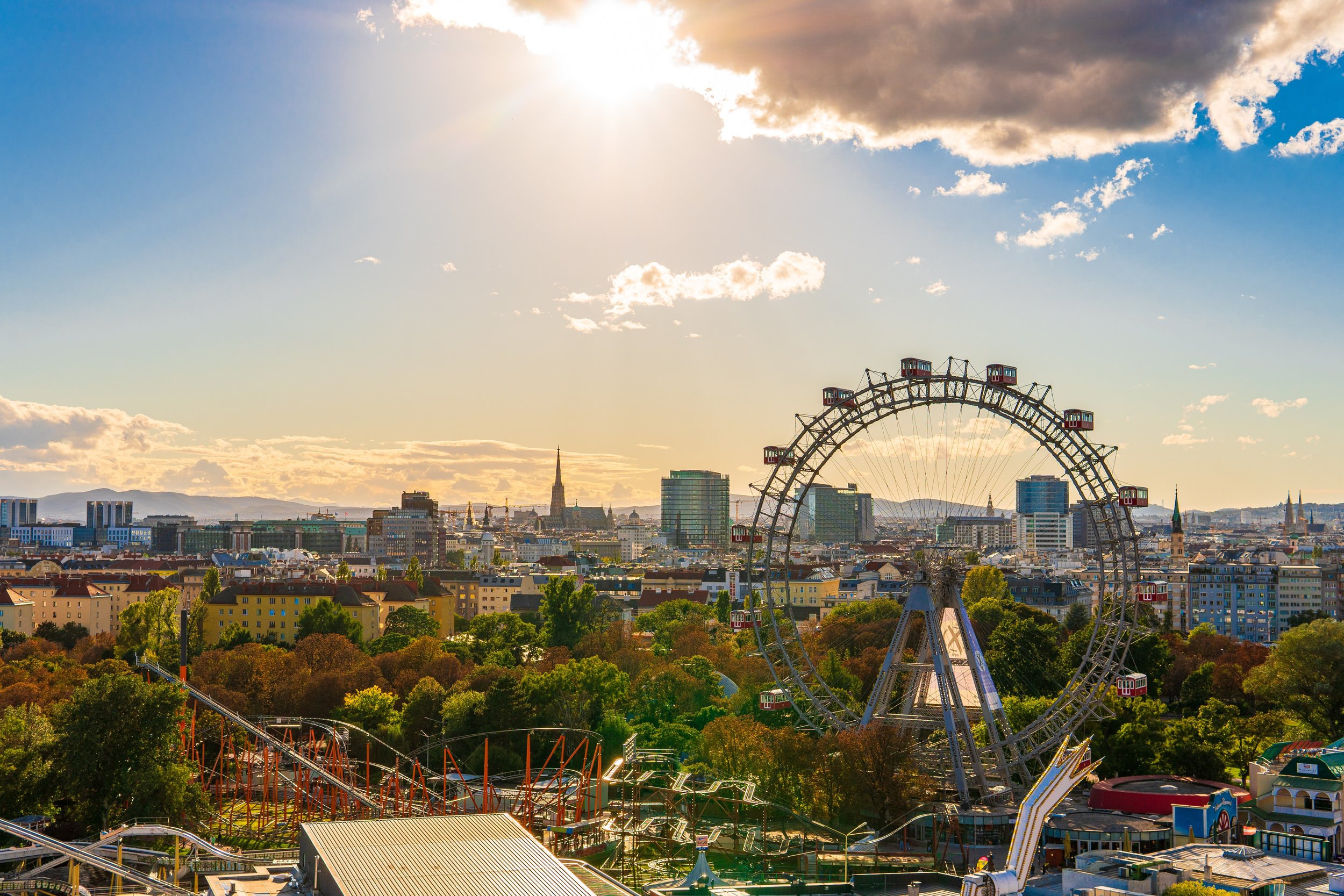
#Wahrzeichen
(Symbolic Landmarks)
Our blog on unique Austrian landmarks, updated monthly.
Above: Vienna with View of Iconic Vienna Ferris Wheel © Österreich Werbung
Burgruine Dürnstein
It's #WahrzeichenWednesday again and today we're completing the first round of the series with a trip to #Dürnstein in Austria's ninth federal state of Lower Austria #Niederösterreich. Located in the #Wachau, a stretch of Danube river valley designated by #UNESCO as a World Cultural Landscape, Dürnstein is known for its wine #Weinberge, the iconic, blue Dürnstein Abbey, and the ruins of the Dürnstein castle that overlooks the city below.
In fact, the city derives its name from the castle, which was named after the "dry stone" (German dürr + Stein) on which it was built around 1150. Dürnstein remains perhaps most famous for what happened about 42 years later in 1192 when King Richard of England, the Lionheart, was captured by Duke Leopold V of Austria on Richard's return from the Third Crusade. Duke Leopold V held King Richard for four months in Dürnstein castle, for which Leopold V was later excommunicated by Pope Celestine III for imprisoning a fellow crusader.
Festung Hohensalzburg
Wahrzeichen Wednesday? More like Festung (Hohensalzburg) Freitag! This week's #Wahrzeichen features the city of Salzburg's most iconic Wahrzeichen, the fortress of #Hohensalzburg. First constructed in 1077, the fortress was built for the bishop of the ecclesiastical principality of Salzburg, a state of the Holy Roman Empire ruled by the bishops of #Salzburg. As one of the largest medieval castles in Europe today, it serves as a major tourist attraction. With over a million yearly visitors, it's not only a local #Wahrzeichen but also the most visited tourist attraction in Austria outside of Vienna. It can be visited by funicular or by walking up the hill from Salzburg's old town to the fortress gate. Great views can also be had from the Kapuzinerberg, just across the river Salzach from the city's Old Town #Altstadt.
Schloss Esterhazy
This week's #WahrzeichenWednesday features Schloss Esterhazy @esterhazy.at in Eisenstadt, the capital of #Burgenland, Austria's easternmost province. Built in the 13th century, the palace became a residence of the noble and influential Esterhazy family in the 17th century. The palace is known in particular for the #Haydnsaal, a world-class concert hall, used by Joseph Haydn himself while he served as the #Esterhazy family's Kapellmeister in the 18th century (see photo 3). One of the largest palaces in Austria today, Schloss Esterhazy and its grounds are a local #Wahrzeichen. See photos 2 and 7 for paintings of the palace and its grounds in the early 19th century as well as photo 5 for a stamp from 1962, documenting Schloss Esterhazy's enduring place in Austrian memory culture.
Schloss Orth
It's #WahrzeichenWednesday and this week we're headed to Schloss Orth in Upper Austria #Oberösterreich. The castle is renowned in part due to the co-produced Austrian-German television series "Schlosshotel Orth" (1996-2004) about a fictional hotel of the same name. While the actual Schloss Orth did serve as the backdrop for the television show, it was never actually a hotel. Built in the tenth century on Traunsee lake in Gmunden, the castle was rebuilt in its current form after a fire in 1626. See photo 3 for a sketch from 1656 by Matthäus Merian. Besides being a local #Wahrzeichen, Schloss Orth, or Gmunden and Traunsee more generally, serves as a gateway the Salzkammergut region, a UNESCO World Heritage Cultural Landscape with gorgeous Alpine lakes, imposing mountains, and excellent hiking.
Stephansdom
This week's #Wahrzeichen takes us to #Vienna where the iconic #Stephansdom prominently stands in the heart of Vienna's old town. The current church was constructed on the ruins of an older parish church consecrated in 1147. Construction was completed in 1433. A masterpiece of European Gothic architecture, it boasted the tallest tower in Europe at the time until the Strasbourg Cathedral overtook it for the title in 1491. At 447.5 ft tall, no building in Austria-Hungary was permitted to be taller. (Thus, the New Cathedral built 1862-1924 in Linz was built 2 meters shorter.) During the Second World War, Stephansdom was damaged; repairs were completed in 1976.
Goldenes Dachl
Centrally located in Innsbruck's Altstadt (old town), the Goldenes Dachl (Golden roof) is the city's most iconic and famous landmark.
The building itself was built in the early 15th century as the residence of the princes of Tyrol (Landesfürsten). Holy Roman Emperor Maximilian I commissioned the golden roof in 1493 in honor of his marriage to his third wife Bianca Maria Sforza of Milan. The golden roof was built with 2,657 fire-gilded copper tiles and was meant to to serve as a royal box where the Emperor and his entourage could sit and enjoy festivals, tournaments, and other events that took place in the square below.
Grazer Uhrturm
The Grazer Uhrturm sits on the castle hill Schloßberg overlooking Graz' old town. Formerly the site of a fortress, it is now a public park that offers stunning views of both the city and the surrounding mountains.
Martinsturm
The Martinsturm, built first as a small tower in the 13th century during the construction of the city wall, was originally used as a fortified house for nobles, and was converted into a chapel in 1362 and renovated in 1601 in the baroque style by master builder Benedetto Prato, who gave the tower its characteristic onion-shaped dome. It was the first baroque building on the Bodensee lake and the largest onion dome tower at the time in all of Central Europe. Since 2015, the interior of the Martinsturm has served as a city museum, but has been a local #Wahrzeichen since long before that.
The Lindwurm Dragon
Local legend tells of the mythical founding of the city in a marshy area plagued by a dragon, which made crossing the river Glan a "crossing of wailing" (Klage=lamenting/wailing, Furt=crossing/ford). Allegedly, the local duke built a tower for safety and hired knights to kill it by “fishing” for it with a chain and hook that connected the tower to a bull for bait. After it took the bait, the knights surrounded and killed the creature. The dragon and tower came to symbolize the city of Klagenfurt.
About #Wahrzeichen
A Wahrzeichen can be translated as a typical landmark. This series introduces Austrian Wahrzeichen from across the country with a brief explanation regarding their history and background. New Wahrzeichen are introduced at least once a month.
